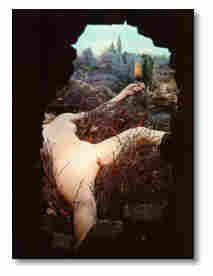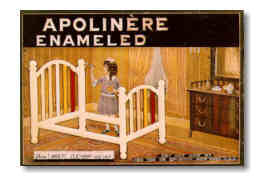



(1887-1968)
Duchamp settled in the United States in 1915 and influenced the movement of modern art throughout his life. The below excerpt is from .Marcel Duchamp's talk that he gave at the Museum of Modern Art in New York in1961, he wanted to prevent art from turning into a " habit-forming drug", and he wished to "carry the mind of the spectator toward other regions more verbal." Duchamp's battle with sheer visual aestheticism, inaugurated during his Dada period, has funded many small movements within modern art. Willam deKooning called Duchamp "a one-man movement."
DUCHAMP'S THOUGHTS ON ART
"In 1913 I had the happy idea to fasten a bicycle wheel to a kitchen stool and watch it turn.
A few months later I bought a cheap reproduction of a winter evening landscape, which I called Pharmacy after adding two small dots, one red and one yellow, in the horizon.
In New York in 1915 1 bought at a hardware store a snow shovel on which I wrote "in advance of the broken arm." It was around that time that the word "ready made" came to mind to designate this form of manifestation. A point which I want very much to establish is that the choice of these"ready mades" was never dictated by aesthetic delectation.
This choice was based on a reaction of visual indifference with at the same time a total absence of good or bad taste . . . in fact a complete anaesthesia. One important characteristic was the short sentence which I occasionally inscribed on the "ready made." That sentence instead of describing the object like a title was meant to carry the mind of the spectator toward other regions more verbal. Sometimes I would add a graphic detail of presentation which, in order to satisfy my craving for alliterations, would be called "ready made aided.""At another time wanting to expose the basic antinomy between art and
ready mades I imagined a "reciprocal ready made": Use a Rembrandt as an ironing board!
I realized very soon the danger of repeating indiscriminately this form of expression and decided to limit the production of "ready mades" to a small number yearly. I was aware at that time that, for the spectator even more than for the artist, art is a habit forming drug and I wanted to protect my it ready mades" against such contamination. Another aspect of the "ready made" is its lack of uniqueness . . . the replica of a "ready made" delivering the same message; in fact nearly everyone of the "ready made" existing today is not an original in the conventional sense. A final remark to this egomaniac's discourse :Since the tubes of paint used by the artist are manufactured and ready-made products we must conclude that all the paintings in the world are ready mades aided" and also works of assemblage." [1961)
